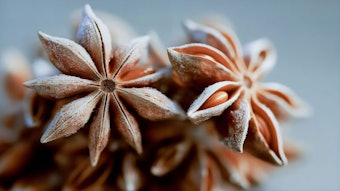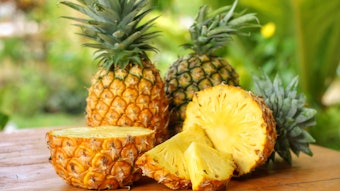Clove is the dried, unopened bud of Eugenia caryophyllus (Spreng.) Bullock and Harrison (fam. Myrtaceae), a tropical tree cultivated in Tanzania, Democratic Republic of Madagascar, Indonesia, Sri Lanka, India and Malaysia. Clove, after black pepper, is the second most popular spice used as condiment. The volatile oil of clove is obtained by water distillation from the dried flower buds but also from stems and leaves. Clove oils are used in perfumery, food industry, dentistry and in Indonesia for tobacco industry. These oils are colorless to brownish yellow liquids, having the characteristic odor and taste of clove with some differences for each type.
The chemical composition of clove oil has been recently studied by several authors (Koller, 1979 and 1981; Lawrence, 1978 and 1980; Iwamuro et al., 1983; Gopalakrishnan, 1984; Muchalal and Crouzet, 1985). Among the forty components identified to date, eugenol is the major one with 80-90% of the oil.
Lawrence (1980) has examined the differences between clove bud, stem and leaf oils using the percentage of eugenol, eugenyl acetate, total sesquiterpene hydrocarbons and the total of the non-phenolic oxygenated compounds, but the chemical composition of the three types is very similar. The discrimination used by Lawrence (1980) is based mainly on some major peaks or the sum of some major peaks.










